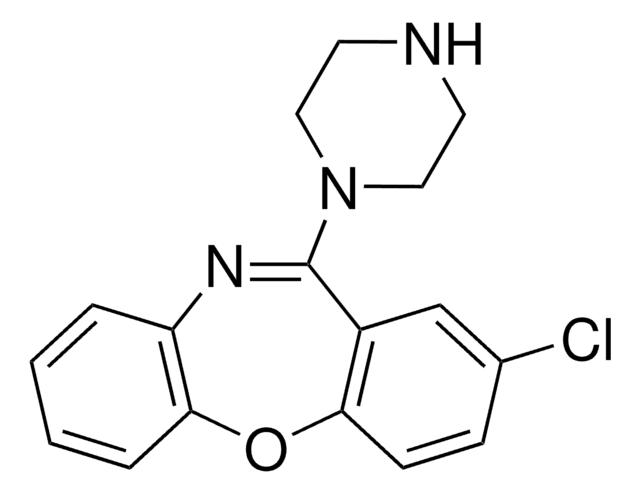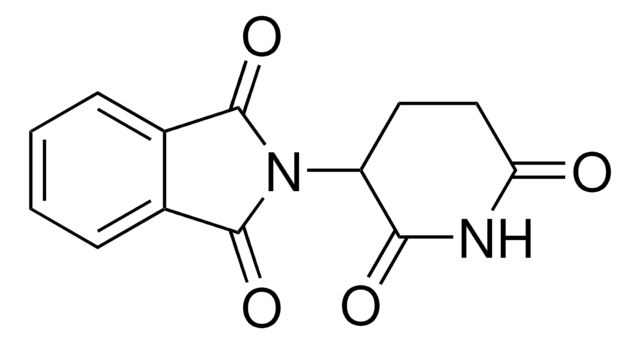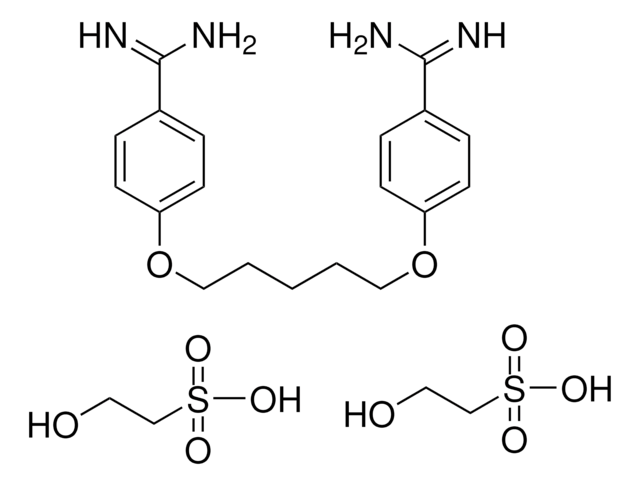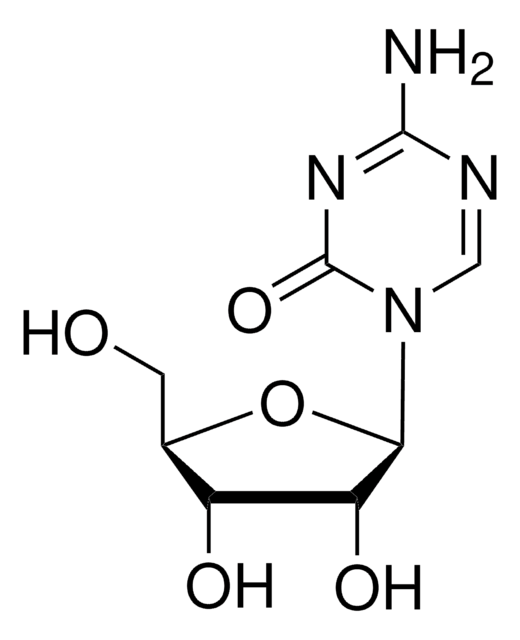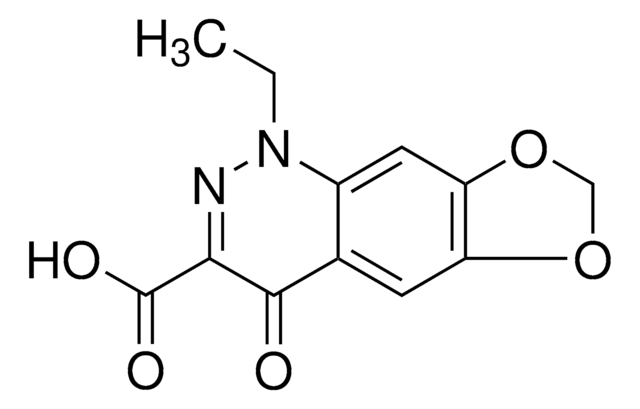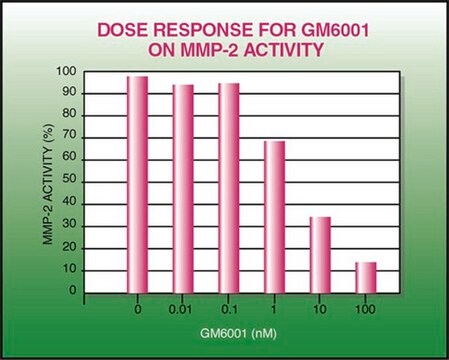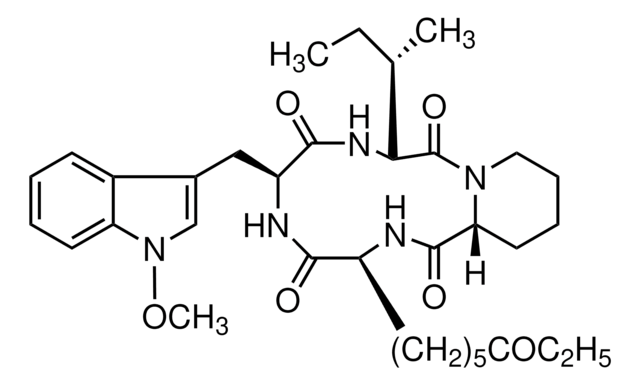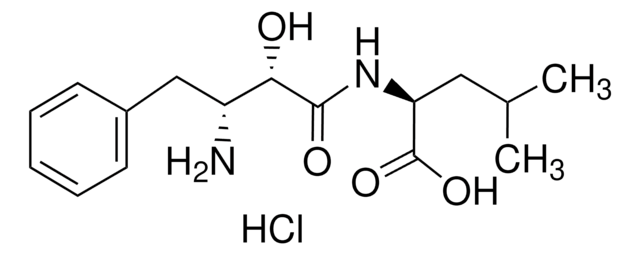A6671
Actinonin
≥98% (TLC), powder, leucine aminopeptidase inhibitor
Synonym(s):
3-[[1-[(2-(Hydroxymethyl)-1-pyrrolidinyl)carbonyl]-2-methylpropyl]carbamoyl]octanohydroxamic acid
About This Item
Recommended Products
product name
Actinonin,
biological source
synthetic (organic)
Quality Level
Assay
≥98% (TLC)
form
powder
solubility
ethanol: 50 mg/mL, clear, colorless
antibiotic activity spectrum
Gram-negative bacteria
Gram-positive bacteria
Mode of action
enzyme | inhibits
storage temp.
−20°C
SMILES string
CCCCCC(CC(=O)NO)C(=O)NC(C(C)C)C(=O)N1CCCC1CO
InChI
1S/C19H35N3O5/c1-4-5-6-8-14(11-16(24)21-27)18(25)20-17(13(2)3)19(26)22-10-7-9-15(22)12-23/h13-15,17,23,27H,4-12H2,1-3H3,(H,20,25)(H,21,24)
InChI key
XJLATMLVMSFZBN-UHFFFAOYSA-N
Gene Information
human ... ANPEP(290) , DPP4(1803) , ECE1(1889) , LAP3(51056)
Looking for similar products? Visit Product Comparison Guide
General description
Application
Biochem/physiol Actions
Features and Benefits
Storage Class Code
11 - Combustible Solids
WGK
WGK 3
Flash Point(F)
Not applicable
Flash Point(C)
Not applicable
Personal Protective Equipment
Regulatory Listings
Regulatory Listings are mainly provided for chemical products. Only limited information can be provided here for non-chemical products. No entry means none of the components are listed. It is the user’s obligation to ensure the safe and legal use of the product.
JAN Code
A6671-BULK:
A6671-VAR:
A6671-5MG:
A6671-10MG:
A6671-25MG:
Certificates of Analysis (COA)
Search for Certificates of Analysis (COA) by entering the products Lot/Batch Number. Lot and Batch Numbers can be found on a product’s label following the words ‘Lot’ or ‘Batch’.
Already Own This Product?
Find documentation for the products that you have recently purchased in the Document Library.
Customers Also Viewed
Our team of scientists has experience in all areas of research including Life Science, Material Science, Chemical Synthesis, Chromatography, Analytical and many others.
Contact Technical Service